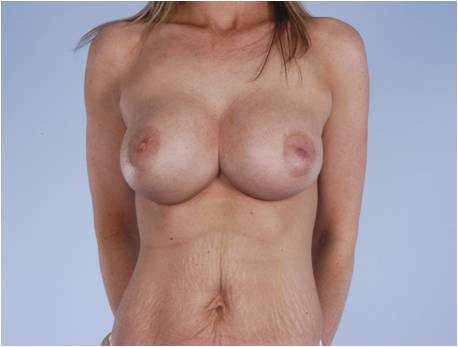Monday, November 3, 2008
14556
Correction Of Synmastia Using The Neo-subpectoral Pocket: Technical Refinements For Difficult Cases
Introduction: Synmastia correction following subpectoral breast augmentation can be a difficult problem. Numerous techniques have been reported with varied results including capsulorrhaphy, delayed revision, and adjustable implants. Each of these options has drawbacks in terms of reliability, technical difficulty, and convenience for the patient.
Instead of repairing an already deformed pocket, an ideal solution would be to create a new pocket in a different site. The neo-subpectoral technique is described whereby a new pocket is dissected between the pectoralis major muscle and the anterior surface of the implant capsule. Thus, the benefits of a subpectoral position are maintained while a precise pocket dissection may be performed in a new site. The purpose of this study is to evaluate the effectiveness of this technique along with the use of adjuncts such as acellular dermis.
Method: The creation of a neo-subpectoral pocket involves a precise pocket dissection just deep to the pectoralis muscle but superficial to the anterior surface of the capsule. For patients who had multiple prior treatment failures, a sheet of acellular dermis was used to bolster the repair. The technical details of this procedure are described. All patients with synmastia were evaluated since this technique was first used at Georgetown University Hospital in November 2005.
Results: Ten patients underwent synmastia correction using the neo-subpectoral technique. Three of these patients presented to us with recurrent synmastia after previously failed attempts at correction using capsulorrhaphy. Acellular dermis was used as an adjunct in three patients. There was no recurrence of synmastia to date in this study. Follow-up ranged from 1.5 to 27 months with a mean follow-up of 11.5 months. There was one hematoma that required evacuation.
Conclusion: The neo-subpectoral technique is an effective method for the correction of synmastia and many types of implant malposition in a single stage. Acelluar dermis may also be used successfully as an adjunct to the neo-subpectoral technique in difficult revisions. This procedure is technically straightforward with stable results on long-term follow-up.


